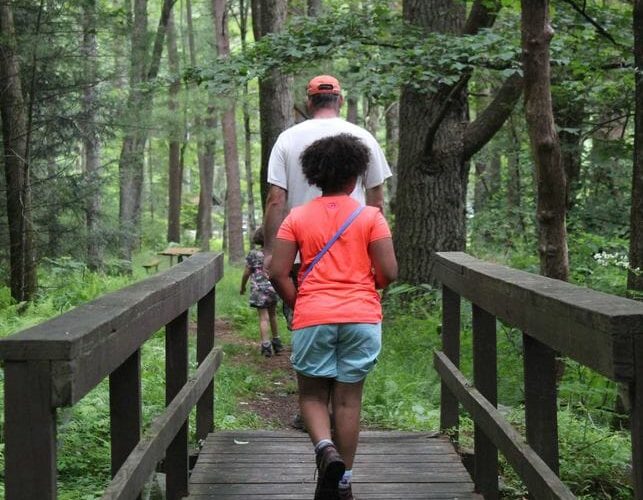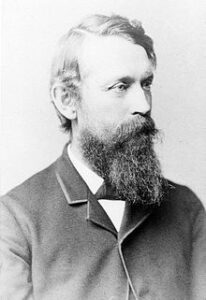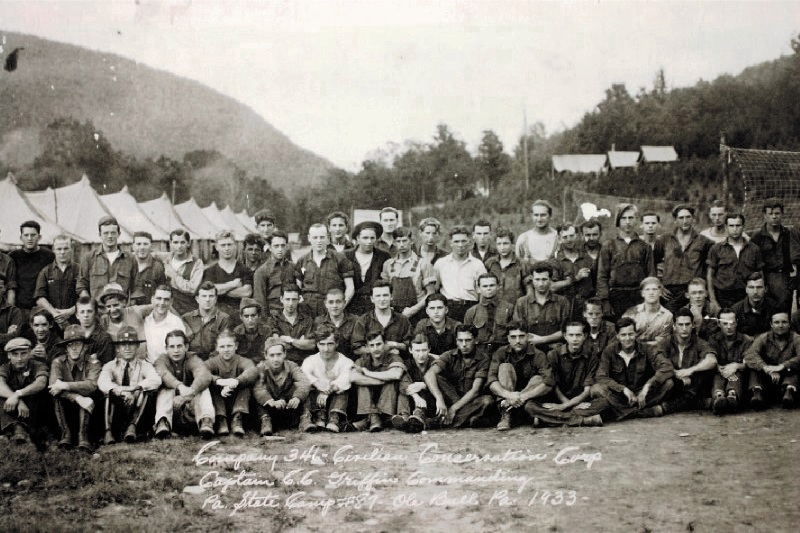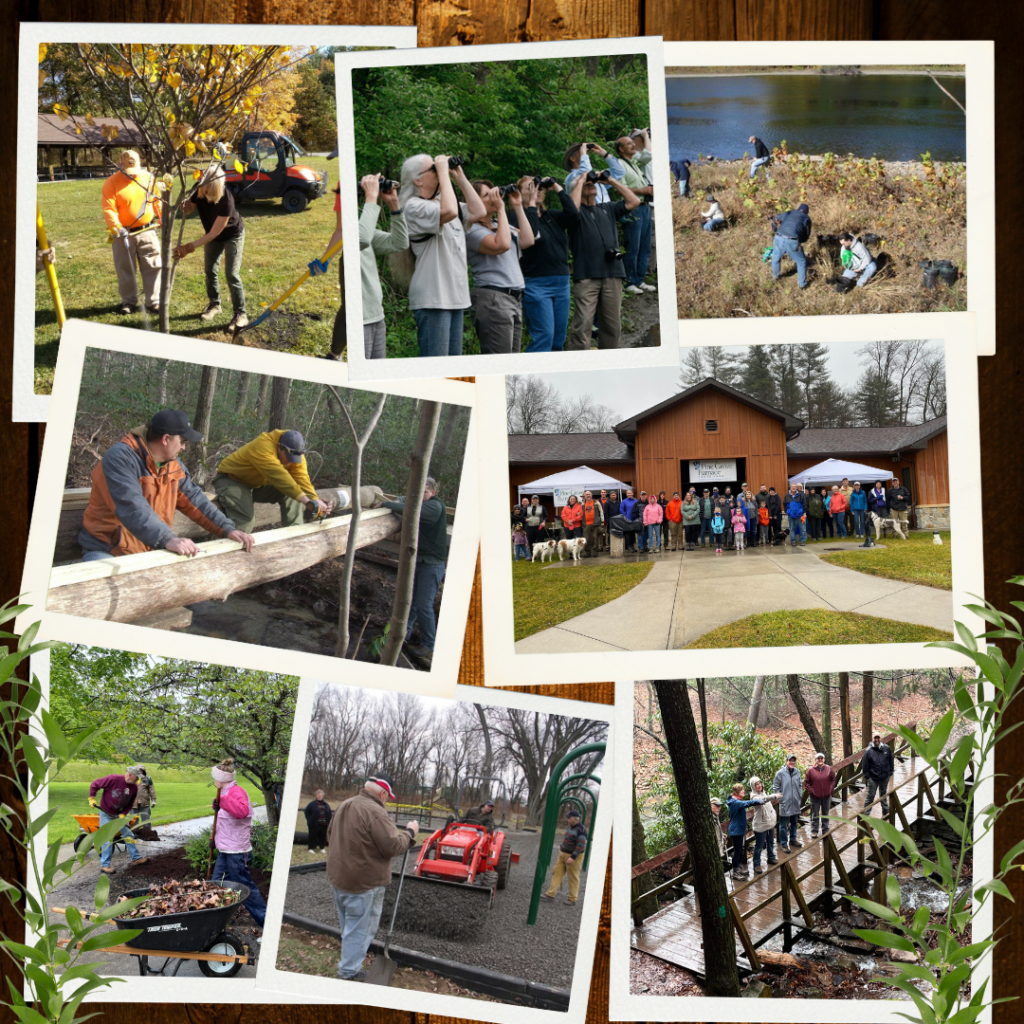
Featured Image: Beth Vanhorn – RB Winter State Park
John F. Kennedy famously said, “We would like to live as we once lived, but history will not permit it.” Applied to our commonwealth’s story of settlement, development, economics, and culture, it’s easy to see how history calls for mindfulness. Our state’s future will always be closely aligned with its natural resources, so to truly consider the big picture, we are focusing on looking back.
William Penn recognized the value of the Pennsylvania forests and natural resources with his 1681 Charter of Rights which granted land rights to settlers and required them to leave one acre of trees for every five acres of land cleared. However, this was largely disregarded. The forest products industry was critical to the commonwealth’s growth. For example, early railroads needed 80 million crossties a year for expanding lines. Historians estimate that every iron furnace (there were 145 in 1850) needed between 20,000 and 35,000 acres of forest for production. Similarly, hemlock bark was the primary source of tannin for the leather industry.
Pennsylvania, abundant with hemlock, was home to numerous tanneries, sawmills, and pulp mills. Behind the loggers came uncontrolled wildfires, soil erosion, and flooding; leaving in its wake unbelievable devastation. The state’s north-central region became known as “Pennsylvania’s Desert.”
“We would like to live as we once lived, but history will not permit it.”
Let Protection Begin
Spurred by the 1889 flood in Johnstown that took the lives of 2,200 people, and by massive deforestation, Governor James Beaver recognized the need to adopt land use policies. As timber companies abandoned land, they often failed to pay taxes, and formerly forested areas came up for tax sale. The state began to purchase some of these for watershed protection. Around this same time period, citizen groups were organizing to protect, study, and care for forests.
A bill signed in 1893 formed the PA Forestry Commission, tasked with the control of forest fires and establishing a forest reserve system. The system began with the purchase of 7,500 acres in Clinton County to be used to “furnish timber, protect the water supply of Young Woman’s Creek, and provide recreation for citizens.”

Joseph T Rothrock
It was also at this time that Pennsylvania’s first state park was purchased—Valley Forge State Park (which then became Valley Forge National Historical Park in 1976). Joseph Rothrock, the Father of Pennsylvania Forestry, and the first President of the Pennsylvania Forestry Association was appointed the first Commissioner of Forestry in 1895. Rothrock promoted the ideas of conservation, recreation, and health. As commissioner, he led the Commonwealth’s efforts to purchase lands for forest reserves, some of which later became state parks. The lands were used to preserve, protect, and propagate forests as well as to protect watersheds. Rothrock applied his knowledge of medicine to establish camps in forest reserves for people with tuberculosis. Mont Alto was the first of these camps.
By 1900, 110,000 acres were acquired for the forest system. Soon the small Division of Forestry was expanded to the cabinet-level Department of Forestry. Pennsylvania lacked fire wardens and lost one acre of land in five to the wildfires that plagued the landscape. Rothrock, along with George Wirt, the state’s first professional forester, worked to establish a forest academy at Mont Alto (now a part of the Pennsylvania State University). Other steps taken to reduce the devastation of fires were to enact campfire laws and to follow Oregon’s lead in developing public camping areas— or campgrounds. By managing and containing campfires, forest fires were greatly reduced.
A New Department
Gifford Pinchot became the governor of Pennsylvania in 1922 (taking office in 1923). Pinchot was well known as the “Father of Conservation” for his work while in the U.S. Forest Service. Pinchot worked tirelessly to increase the forest holdings of the state. In 1923, the Department of Forestry was renamed the Department of Forests and Waters. The Administrative Code of 1929 formed the Bureau of State Parks, within the Department. Pennsylvania was a leader in public land designations at this time, ranking only behind New York.
The 1930s saw a growing demand for recreation. The Pennsylvania Parks Association was formed to promote land acquisition and outdoor recreation. The Association developed the first statewide plan for state parks, which recognized a deficiency in the quantity and distribution of land in relation to its populations. The report recommended 10 acres per 1000
residents, an almost 10-fold increase.
The Era of the Civilian Conservation Corps

CCC at Ole Bull State Park, 1933
During the Great Depression, Pennsylvania received federal assistance for park and forest restoration and development from the Civilian Conservation Corps. CCC workers, or “Roosevelt’s Tree Army” as they were called, accomplished a great deal to preserve and protect public lands. Many were involved in recreation and infrastructure projects, as well as reforestation, water quality, and flood control. By 1935 Pennsylvania had 113 active CCC camps, second only to California. The CCC era lasted for nine years, ending with the onset of WWII.
By 1935 Pennsylvania had 113 active CCC camps, second only to California.
Outdoor Recreation
The idea that outdoor recreation is a legitimate use of time is fairly recent. During most of the nation’s history, moralists tended to frown on those who employed their leisure time for outdoor play, often viewing it somewhere on the continuum from sinful to frivolous.
Not that recreation as such was a priority—early settlers spent their entire day raising food, doing chores, and “maintaining” their lives. This all changed with the Industrial Revolution, which brought with it urbanization and a population explosion. By 1950, more than half of American people lived in urban areas. Today, 75% of American people live in urban areas. Most work indoors, doing jobs that require little to no physical labor. We needed to get outside!
Goddard Era
The tenure of Forests and Waters Secretary Maurice K. Goddard (1955-1970, and 1970-1979 as Secretary of the Department of Environmental Resources), also known as the “Goddard Era of State Parks” brought huge changes to the park system. During the post-WWII period, communities and businesses acquired land for housing, malls, industrial parks, schools, and roads. At the same time, decision-makers saw an increased demand for parks and forests for recreation due to shorter work weeks, economic boom, more families with cars, improved roads, paid vacations, and increasing populations. An open space program was an economic opportunity as it identified a potential new source of revenue—tourism. Goddard enacted Pennsylvania’s open space program and set the goal of one park within 25 miles of every Pennsylvanian. With the determination of a man on a mission, Goddard established or started 55 parks protecting 130,000 acres of land!
In 1976, because of the vision and hard work of Pennsylvania’s leaders in conservation, Pennsylvania won the National Gold Medal for excellence in park and recreation administration. It was awarded again in 2009. Since 1998, Pennsylvania’s forests have been certified sustainable.
Today
Over a century after the first properties were purchased for a parks and forest reserve system, Pennsylvania has one of largest systems in the nation, with 120 parks and 2.2 million acres of state forests. Like all great stories, the history of our park and forest system is a long and winding road, but also like the best stories, you are left with excitement and interest in “the next chapter.”

PA Parks and Forests Friends are people like you who volunteer their time, services, and support to our state parks and forests.
Here’s the best part of that – you can be part of it. The Pennsylvania Parks and Forests Foundation strives to create a constituency for natural resource protection by connecting people to the land, through the activities of friends groups, events,
and opportunities, and through public education. The Conservation Heritage Project preserves our rich legacy of conservation. The next time you stroll along your favorite trail, paddle a stretch of river or simply lay on your back and gaze at the stars, remember that we all have a role in continuing the legacy of our conservation-minded forbearers, so that Pennsylvania can continue to be a great place to live, work and play.
Resources
- RR Thorpe, The Crown Jewel of Pennsylvania, the State Forest System, 1997.
- William C. Forrey, History of Pennsylvania’s State Parks, 1984, Commonwealth of Pennsylvania.
- William C. Forrey, History of Pennsylvania’s State Parks, Vol II, 2015—in production, check back in spring
for how to obtain. - Dan Cupper, Our Priceless Heritage, Pennsylvania State Parks, 1993, Pennsylvania Historic and Museum Commission




